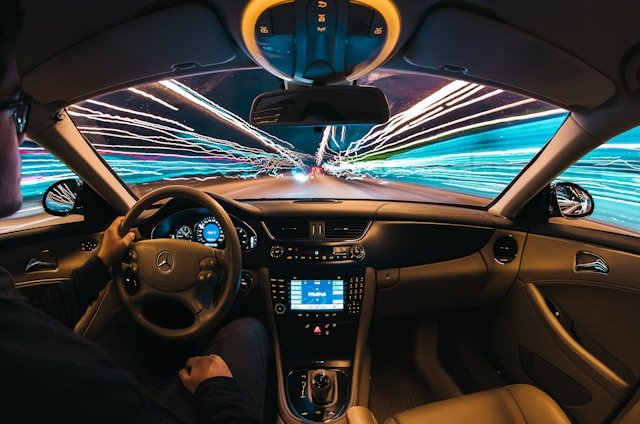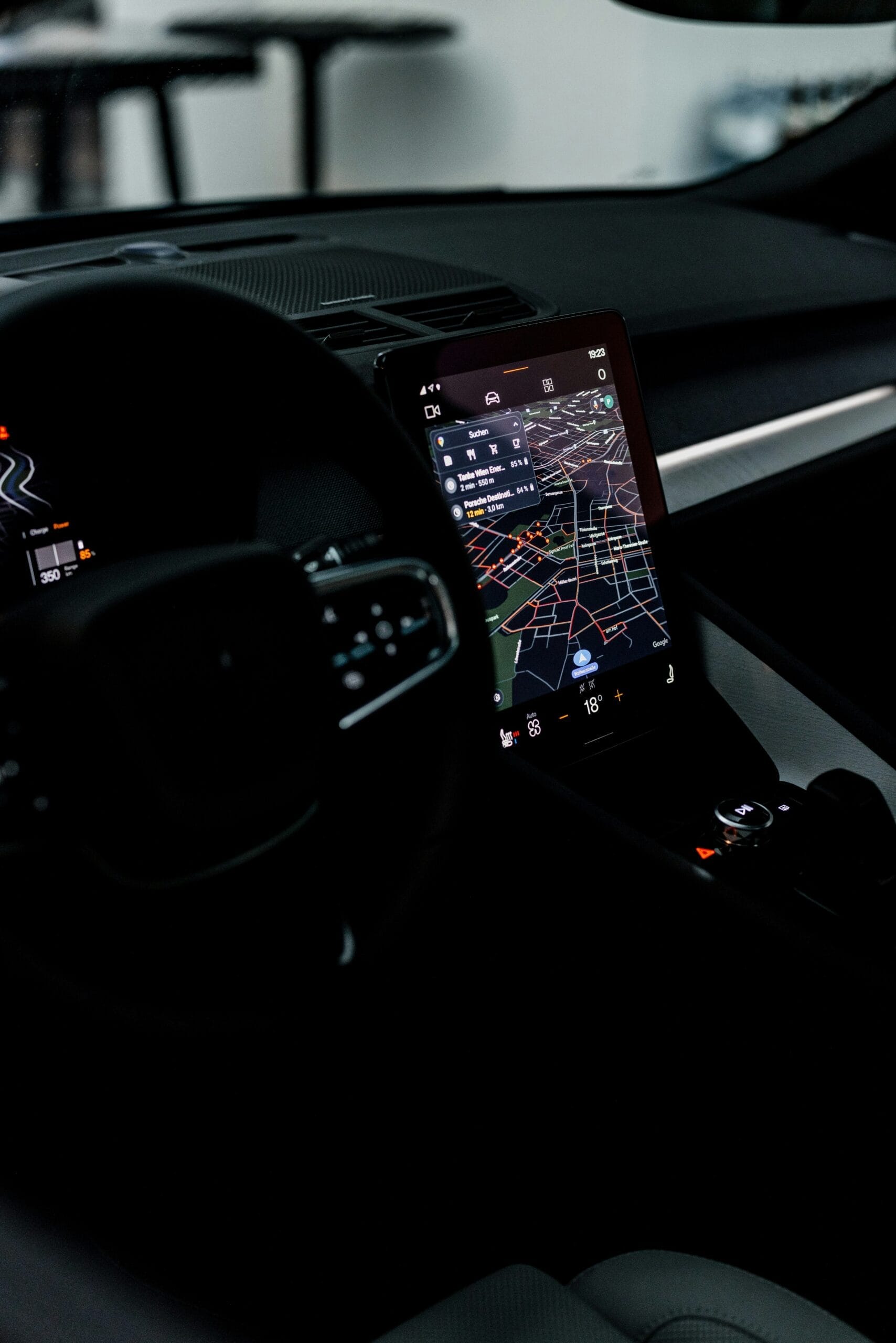Advances in Automobile Technology You Need to Know in 2025
Why Everyone’s Talking About Automobile Technology in 2025
Let’s clear something up first—automobile technology isn’t just about flying cars or ultra-expensive electric vehicles that only billionaires can afford. That’s the biggest myth out there. People think “car tech” means something far off in the future or something out of reach. But guess what? It’s already here, and it’s part of your daily drive whether you notice it or not.
From smart dashboards and reverse cameras to voice-activated navigation and advanced driver-assistance systems (ADAS), automotive technology has quietly worked its way into almost every car model you see on the road. And in 2025, it’s only getting smarter, faster, and more helpful.
So, what’s all the hype about? Simple—this tech is making cars safer, more fun, and easier to drive. Whether it’s AI in cars, connected vehicle systems, or even self-driving software, these features are built to improve your experience behind the wheel. And the best part? It’s not just happening in luxury models anymore. Even mid-range and affordable cars now come with smart vehicle technology that would’ve sounded like science fiction a few years ago.
In this blog, we’re diving into some of the coolest innovations in car tech that are already shaping the future. Buckle up, it’s gonna be a fun ride.
Smart Cars Are Already Here – Let’s Talk About Connected Car Tech
Forget the idea that a “smart car” is some kind of high-end Tesla that only tech nerds can afford. Connected car tech is already baked into a ton of new models you’ll find at your local dealership. And no, it’s not just Bluetooth or your favorite Spotify playlist—it’s way deeper than that.
So, what’s a connected car anyway?
It’s a car that can communicate with the world around it—with traffic signals, other vehicles, parking systems, the cloud, and sometimes even your smart home. This is what experts call vehicle-to-Everything communication (V2X). Sounds fancy, right? But here’s how it works in real life:
Let’s say you’re driving, and a few blocks ahead, traffic has slowed down because of an accident. Your car can get that info in real time and help you reroute before you even see the red lights. That’s real-time traffic data at work. Some cars even adjust their speed automatically based on road conditions and nearby vehicles using vehicle-to-vehicle communication. That’s not the future—that’s now.
We also have car-to-cloud tech, which means your car can send and receive updates just like your phone. So, your vehicle might get a software update overnight, improving things like fuel efficiency or even unlocking new features—all without visiting a mechanic. These are called over-the-air updates, and they’re becoming the norm.
And let’s not forget safety. Connected systems can talk to smart city infrastructure. That means red-light cameras, emergency vehicles, and even pedestrian signals could one day be part of your car’s driving decisions. It’s all part of what we call next-gen mobility—a future where tech and transportation move together.
This is also great news for folks looking for affordable cars with smart features. You don’t need to buy the most expensive ride to enjoy the benefits of automobile technology anymore. Even budget-friendly models are rolling out with connected infotainment systems, digital dashboards, and driver-assist features that make every ride smoother and safer.
So yeah, smart cars aren’t a thing of the future—they’re already sitting in parking lots, driveways, and highways around you.
AI in Cars – More Than Just Voice Assistants
Here’s the thing—most people think AI in cars is just about saying, “Hey car, play my favorite song” or asking for directions. But that’s just scratching the surface. Artificial Intelligence in automobile technology is doing way more than you might imagine.
AI is turning everyday vehicles into smart driving machines that learn from your behavior, adapt to traffic, and even help prevent breakdowns before they happen. Sounds cool, right? Let’s break it down.
One of the biggest game-changers is predictive maintenance. Your car now collects data from sensors and uses AI to spot potential issues—like a dying battery or worn-out brakes—before they become real problems. That means fewer surprise trips to the mechanic and less stress for you.
Then, there are AI-powered navigation systems. Unlike old-school GPS that just shows you a route, today’s smart systems use real-time data to give you the fastest, safest, and most fuel-efficient route based on current traffic, road hazards, and even weather. And yes, they keep getting smarter the more you drive.
But wait, there’s more—how about in-car AI voice assistants that do more than play music? These systems now handle things like controlling the climate, adjusting seats, reading your texts, and even booking appointments. The best part? You barely need to lift a finger.
AI also plays a huge role in driver monitoring systems. It can detect if you’re drowsy, distracted, or not paying attention—and alert you before it’s too late. That’s smart vehicle technology working to keep you safe without being annoying.
And let’s not forget software. Cars today run on complex systems that need regular updates, just like your smartphone. With AI-backed car software upgrades, your vehicle keeps learning, adapting, and improving its features over time.
So yeah, AI isn’t just a gimmick. It’s the brain behind the wheel, making modern cars safer, smarter, and way more convenient to drive.
Self-Driving Cars – Still a Dream or Almost Here?
Let’s bust another myth: self-driving cars aren’t some far-off dream that’ll take 50 years to become a reality. Nope. They’re already being tested, and in some cities, they’re cruising around with zero human input. So the big question is: how close are we?
Well, we’re not quite at the stage where you can take a nap while your car handles the morning commute. But we are seeing rapid advancements in autonomous vehicle technology that are bringing us super close.
Self-driving cars rely on a bunch of tech stacked together: LIDAR systems, radar sensors, high-definition cameras, and AI software that processes all this data in real-time. Together, they help the car “see” the environment—everything from pedestrians and traffic signs to cyclists and lane markings.
You’ve probably already experienced the early versions of this tech in the form of automated parking, lane-keeping assistance, or adaptive cruise control. These features are baby steps toward full autonomy.
Companies aren’t just testing these systems in labs anymore. Real-world trials are happening in places like California, Arizona, and even parts of Europe. Some cities have self-driving taxis zipping around with no human driver inside. It’s not science fiction—it’s happening right now.
But what about safety? Good question. Most self-driving software is built to follow traffic rules flawlessly. No texting, no speeding, no risky lane changes. The goal is for autonomous vehicles to reduce human error, which is the cause of over 90% of car accidents today.
Still, we’ve got some hurdles to cross—like better road infrastructure, legal regulations, and public trust. But from what we’re seeing, it’s only a matter of time before autonomous driving becomes a normal part of life.
So, self-driving cars aren’t a far-fetched idea. They’re just around the corner, and the automobile industry is investing big to make sure they’re here to stay.
EVs Are Not Just Expensive Tech Toys Anymore
There’s a big myth out there that electric vehicles (EVs) are just fancy toys for the rich. You know, something you’d expect a tech millionaire to drive around Silicon Valley. But that’s not true anymore—not even close.
The electric car market has exploded in the past few years, and 2025 is shaping up to be the year EVs go truly mainstream. Big-name brands are launching affordable electric vehicles, and governments around the world are offering incentives, tax breaks, and charging station support to make it easier than ever to own one.
And guess what? EVs today are packed with the same (and often better) automobile technologies you’d find in high-end gas cars—smart dashboards, battery monitoring systems, and even AI-based performance tuning.
Let’s talk about the tech behind EVs. Modern electric cars come with advanced battery technology that lets you go longer distances on a single charge—some models even crossing the 500 km mark. And the best part? Charging is getting faster, too. With fast-charging infrastructure expanding, you can now power up your EV in less than an hour.
Plus, most EVs come with regenerative braking systems—tech that converts braking energy back into battery power. It’s like getting free miles every time you slow down.
What’s also exciting is how automobile manufacturers are integrating smart grid compatibility, meaning your car can communicate with energy providers and help balance the electricity load. It’s a win-win for the environment and your wallet.
So, no, EVs aren’t just overpriced gadgets. They’re practical, powerful, and packed with futuristic tech that makes gas cars look outdated.
The Rise of Eco-Friendly Automobile Technology
Let’s bust another myth—people often think car technology is only about speed, luxury, or showing off. But here’s the truth: Eco-friendly automobile technology is one of the biggest trends driving the industry right now. And it’s not about looks—it’s about impact.
With climate change becoming a serious concern, green vehicle technology is more than just a buzzword. It’s about reducing emissions, saving fuel, and protecting the planet—while still giving you a smooth ride.
One of the major innovations in this space is the shift to hybrid powertrains. These systems combine traditional engines with electric motors, giving you the best of both worlds—better mileage and fewer emissions. Hybrid cars are ideal for those who want to go green without giving up their gas engine just yet.
Then there’s the development of hydrogen fuel cell vehicles. Unlike electric cars that run on batteries, these cars use hydrogen to generate electricity and only emit water vapor. That’s it—no carbon, no pollution. Although still in the early stages, this tech has massive potential.
Let’s also talk about sustainable car manufacturing. Automakers are now using recycled materials, eco-friendly paints, and low-carbon production methods to reduce the environmental footprint of car production. Some brands are even designing vehicles that are 95% recyclable.
And don’t forget eco-friendly driving apps that help drivers track fuel efficiency, tire pressure, and even carbon footprint in real time. These tools make it super easy to drive smarter and greener every day.
So, no, automobile technology isn’t all about speed and gadgets. It’s also about sustainability, cleaner air, and smarter choices for a better future.
Car Connectivity – It’s Not Just About Internet Access
A lot of people hear the term connected cars and instantly think, “Oh, that just means it has Wi-Fi or a hotspot.” Nope. That’s only the tip of the iceberg.
Car connectivity today goes far beyond just streaming Spotify or browsing Google Maps. It’s all about how your car talks to everything—you, other vehicles, the road, traffic systems, and even service centers. We’re living in the era of vehicle-to-Everything (V2X) communication, and it’s a total game changer.
Let’s start with vehicle-to-vehicle (V2V) communication. Imagine your car warning you that the car ahead hit the brakes hard—even before you can see it. That’s not magic. It’s your car talking to another car in real time, making split-second decisions to keep you safe.
Then there’s vehicle-to-infrastructure (V2I) tech. This allows your car to receive updates from traffic lights, road signs, or even construction zones. Think about getting a heads-up on red lights, slippery roads, or an accident around the corner—all before it appears in your line of sight.
And we can’t forget about car-to-cloud integration. This means your car is constantly syncing data with cloud systems. So, whether it’s a software update, a diagnostic report, or real-time traffic analytics—it’s all handled instantly. This kind of smart vehicle communication keeps everything running smooth without you lifting a finger.
There’s also telematics technology, which tracks and transmits data like vehicle speed, location, engine health, and even fuel usage. It’s super useful for fleet owners, parents of teen drivers, or anyone who wants to stay on top of their vehicle’s condition.
So yeah, connected car technology isn’t just about the internet—it’s about safety, efficiency, and giving drivers full control and visibility on the road.
Automotive Software – The Silent Hero Behind the Wheel
Here’s a thought—most folks still think the engine is the heart of a car. But today, automotive software might be the real hero under the hood.
Modern cars run on millions of lines of code. From your touchscreen display to your advanced driver-assistance systems (ADAS), everything relies on software to work smoothly and safely. Without it, your car is just an expensive metal box.
Let’s talk about automotive operating systems. These are like the brains of your vehicle, managing everything from real-time navigation to sensor data and in-car entertainment. They allow your vehicle to multitask just like a smartphone.
Then there’s over-the-air (OTA) updates, which have totally changed how car maintenance works. Instead of going to the dealership for every small fix or upgrade, your car can now update its software overnight—just like your phone. And yes, this includes safety features, performance boosts, and even UI improvements.
We’re also seeing a rise in automotive cybersecurity. As cars become more connected, they’re also more vulnerable to cyber threats. So now, automakers are baking in secure firewalls, encryption, and real-time threat monitoring systems to keep both you and your data safe.
Let’s not forget software-defined vehicles (SDVs). These are cars where the hardware stays the same, but the features and capabilities keep evolving with software upgrades. Want better fuel efficiency? A smoother drive mode? Voice assistant improvements? Just download the update.
And if you’re someone who tracks car performance, you’ve got data-driven diagnostics that help detect issues through smart sensors and analytics—before anything breaks down.
In short, automotive software is no longer in the background. It’s running the show and making your ride smarter, safer, and more future-proof every day.
It’s Not Just Robots – Human Skills Still Matter in Auto Tech
A lot of people think automobile technology careers are only for coders, engineers, or people who can build robots with their eyes closed. Totally not true. While high-tech skills are important, the auto industry still needs creative thinkers, hands-on workers, and smart problem-solvers—and that opens the door for all kinds of roles.
Let’s start with the more technical side. Yes, if you’re into software, electronics, or AI, there’s a booming demand for automotive engineers, vehicle software developers, and ADAS specialists. These folks design and fine-tune systems like crash avoidance, parking sensors, and even autonomous driving features.
But here’s the cool part: there are also jobs in automobile design, user experience, and even green technology development. You don’t need to code to contribute. As cars become more customer-focused, companies are hiring designers, usability experts, and even data analysts to improve the user experience.
Got a thing for hands-on work? Then, automotive technicians are still a big deal—especially those trained in electric vehicle repairs, battery diagnostics, and hybrid powertrain systems. These are high-paying, high-demand roles that mix real-world skills with smart tools.
And let’s not forget project managers, supply chain experts, and quality control pros who keep everything running smoothly behind the scenes in automobile manufacturing technology.
If you love tech but don’t want to be stuck behind a screen all day, this industry gives you plenty of paths to explore. It’s wide open for different skill sets.
Education & Courses – Not All Auto Tech Careers Need a 4-Year Degree
Here’s a belief that needs correcting: “You have to go to university for years if you want a job in automotive technology.” Nope. Not even close.
Yes, some positions need a degree, but there are tons of other routes too—certifications, diplomas, online courses, and apprenticeships that can get you up to speed fast. And the best part? Many of them are flexible, affordable, and super focused on practical, job-ready skills.
For example, if you want to get into EV technology, you can find certified electric vehicle technician programs that take less than a year. These cover battery management systems, charging infrastructure, and even safety protocols.
Then, there’s the rise of online automobile technology courses, which are great for learning automotive software systems, vehicle networking, and telemetry data—all from home. Platforms like Coursera, Udacity, and even some car manufacturers themselves are offering these programs.
You can also find hybrid vehicle maintenance training and ADAS certification programs that focus specifically on today’s most in-demand skills.
And if you’re already in the industry? Continuous learning matters, too. Taking short courses in automotive cybersecurity or data diagnostics for cars can seriously boost your profile.
In short, you don’t need a four-year degree to build a strong future in this space. You just need the right skills—and the motivation to keep learning.
No, It’s Not Just for Tech Giants – Small Businesses Are Driving Auto Tech, Too
A lot of folks assume that automobile technology is only for big car manufacturers and giant tech companies. That’s not true at all. Some of the most exciting innovations are coming from startups and small businesses. These underdogs are shaking up the industry with fresh ideas, faster execution, and laser-focused solutions.
Let’s take automotive tech startups, for example. They’re leading the charge in areas like connected car apps, EV battery innovation, smart vehicle tracking, and even on-demand car diagnostics. They’re solving everyday problems with clever tools and flexible software.
And guess what? These small players are more open to partnerships. Local garages, independent technicians, and even car rental businesses are teaming up with tech providers to upgrade their services using tools like vehicle telematics, predictive maintenance software, and mobile car service apps.
If you’re a business owner in the auto space, this is your chance to grow. With the right automotive technology for small businesses, you can offer better customer experiences, reduce overheads, and even manage fleets more efficiently.
Plus, these innovations are easier to adopt now. You no longer need massive IT teams or budgets. Most tools are cloud-based, subscription-friendly, and come with solid customer support to get you going.
So yeah, you don’t have to be Tesla to play in the big leagues. Small and mid-sized businesses can harness the power of auto tech solutions.
The Real-World Impact – How Auto Tech Is Changing Our Daily Lives
Many people think automobile technology is only about futuristic concepts or fancy gadgets they see in ads. But let’s be real—it’s already changing how we live, commute, and drive every single day.
Take navigation and traffic systems. Thanks to real-time GPS updates, AI-based traffic predictions, and voice-assisted navigation, we spend less time stuck in traffic and more time getting things done. That’s not just cool—it’s practical.
Then, there’s safety. With features like lane-keeping assist, blind spot detection, collision alerts, and driver drowsiness monitors, we’re seeing a drop in accidents. These automobile safety technologies are saving lives, not just making headlines.
Don’t forget convenience either. You can now start your car with your phone, set the temperature before you get in, or even let your vehicle park itself. Yeah, that’s all thanks to connected vehicle technology and smart car software.
Electric vehicles are another game-changer. They’re cleaner, quieter, and cheaper to maintain. Plus, EV charging infrastructure is growing fast, making it easier to ditch gas without the range anxiety.
And for families? It’s easier than ever to manage school drop-offs, work commutes, and road trips with vehicles that think ahead, suggest routes, and help avoid delays.
In short, auto tech is no longer some far-off dream—it’s part of everyday life. It makes driving safer, cheaper, and way more fun.
Don’t Buy Into the Hype – Challenges Still Exist in Automobile Technology
It’s easy to think automobile technology is all sunshine and smooth rides, but let’s be honest—it has its bumps too. Not everything is perfect, and it’s important to talk about the challenges that come with all this cool innovation.
First up? Cybersecurity. As cars get more connected, they’re also more vulnerable to hacking. Imagine someone taking control of your vehicle remotely. Scary, right? That’s why there’s a growing demand for automotive cybersecurity experts and better encryption in connected car systems.
Next, there’s the issue of infrastructure. While electric vehicles are rising in popularity, the EV charging network still has a long way to go in many regions. People are still worried about range anxiety and charging access, especially in rural or underdeveloped areas.
Let’s not forget the cost. Many advanced features—like autonomous driving systems, advanced infotainment tech, and in-car connectivity—can still be super expensive. This makes newer cars harder to afford for average consumers.
Also, traditional auto workers are feeling the pinch. With automation and digital systems taking over, reskilling is a big issue. Not everyone’s ready or able to switch careers or learn new tech tools.
So yeah, automobile tech is amazing, but it’s not without hurdles. And the more we talk about these openly, the better we’ll be at solving them.
Future of Automobile Technology – So, What’s Next?
Some people think we’ve already hit the peak of automobile technology. But the truth is—we’re just getting started.
The next few years will be wild. Think fully autonomous vehicles, smart roads, vehicle-to-everything (V2X) communication, and even flying cars becoming more than just science fiction. Okay, maybe not the Jetsons level just yet, but you get the idea.
We’ll also see more integration between cars and smart cities. Vehicles will talk to traffic lights, parking systems, and even emergency services to make our roads smarter and safer.
Electric and hydrogen-powered vehicles will continue gaining momentum, especially as countries push for zero-emission transportation and invest in green infrastructure.
And don’t be surprised if AI becomes your co-pilot—handling everything from real-time diagnostics to planning your next trip based on your habits and schedule.
Plus, with the rise of subscription-based vehicle ownership, car-as-a-service (CaaS), and shared mobility, the entire idea of owning a car might change for future generations.
Bottom line? The future of auto tech is fast, flexible, and filled with possibilities. Whether you’re a driver, student, business owner, or tech enthusiast, now’s the time to get excited and get involved.
Final Words – Why You Should Care About Automobile Technology Now
Let’s be real—automobile technology isn’t just about the future. It’s already shaping your present. Whether you’re planning a career in auto tech, thinking of buying an electric vehicle, or just curious about how your car works—it matters.
From making roads safer to reducing emissions, from opening new job markets to improving daily life, the impact of auto tech is massive. And the best part? You don’t have to be an engineer or a tech genius to be part of this movement.
With short courses, online certifications, and job roles in every corner of the industry, there’s a spot for everyone.
So don’t just sit in the passenger seat—get involved. The road ahead is full of innovation, and it’s yours to explore.
Let your curiosity drive you. Because in this journey, knowledge is the real horsepower. 🚗⚡







